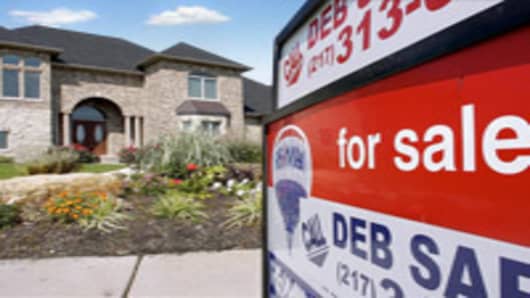Average home prices through May increased for the second month in a row, according to the latest S&P/Case-ShillerHome Price Indices, which measure both the top ten and top twenty housing markets in the US.
Prices are still down from a year ago, but those annual drops are improving.
“On a monthly basis, all 20 cities and both composites posted positive returns and 17 of those cities saw those rates of change increase compared to what was observed for April. Seventeen of the 20 cities and both Composites also saw improved annual rates of return,” notes S&P’s David Blitzer.
"We have observed two consecutive months of increasing home prices and overall improvements in monthly and annual returns," he added. "However, we need to remember that spring and early summer are seasonally strong buying months so this trend must continue throughout the summer and into the fall.”
This is not the first time since the initial home price collapse in 2006 that we have seen prices rise, only to fall again. We saw large price gains in 2009, thanks to the home buyer tax credit, and we saw slight gains last spring due to some seasonality and a big run on distressed properties by investors.
So how do we know if the latest gains we are seeing are here to stay?
Much of the answer lies in foreclosures. Many markets have seen their supply of foreclosed properties fall dramatically, due to huge investor demand.
Take Phoenix, for example, where investors claim there is just not enough to buy. Home prices there are up 11.5 percent from a year ago.
Miami and Tampa are also seeing solid gains. But Atlanta continues to be the weakest spot; as foreclosure supplies there surge, prices are down 14.5 percent.
Foreclosures are falling nationwide, but the crisis is far from over, and the concern is that all the delays in foreclosure processing will continue to wreak havoc on home prices for at least another year, if not longer.
There were 1.4 million homes in some stage of foreclosure in June, down slightly from 1.5 million in June of 2011, according to a new report from CoreLogic.
Completed foreclosures, however, fell more dramatically, down 24 percent from a year ago. This is likely due to renewed loan modification efforts by lenders, as well as new state legislation, that are keeping many homes from final foreclosure.
The big questions continue to be how long these foreclosure delays will last and how successful foreclosure alternatives and loan modifications will ultimately be. And these numbers don’t include loans that are delinquent but not yet in the foreclosure process. Those number around 3.6 million according to Lender Processing Services.
With so many different home price surveys showing gains this spring, and in the absence of a home buyer tax credit, it would appear that this price recovery is the real thing.
But there is in fact one government stimulus in play that some have been discounting, and that is record low interest rates. Those low rates should be giving home buyers even more purchasing power than we are seeing in the price numbers.
The concern is that these price gains are largely on the low end, distressed sector, where the bulk of home sales are right now. Lack of supply is pushing prices up there, but not, perhaps, in the rest of the market, where sales are still sluggish, and buyers need mortgages, unlike so many all-cash investors.
While some housing analysts have already called a bottom to home prices, others warn we may not have seen the last of the losses.
The spring market was slightly better than expected, especially for the home builders, but we have to remember that the builders and the overall housing market are not necessarily the same.
Home builders may be seeing gains due to the drop in supply of distressed properties, but that drop in supply could in turn slow the existing home sales market and push price numbers down yet again.
-By CNBC's Diana Olick
Questions? Comments? RealtyCheck@cnbc.comAnd follow me on Twitter @Diana_Olick



